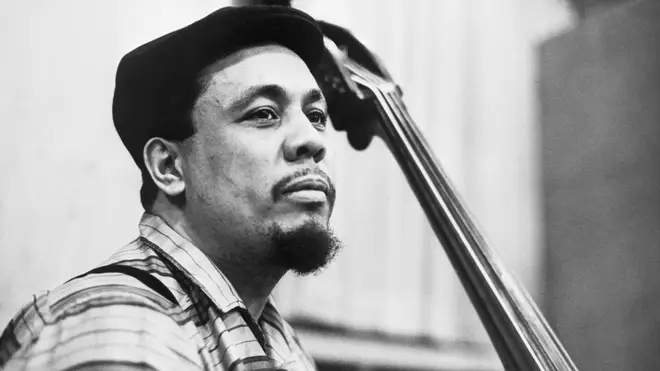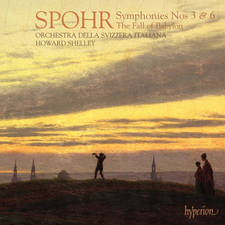Charles Mingus at 100: a legendary jazz musician with classical music roots
22 April 2022, 17:16

Born on 22nd April 1922, legendary jazz composer and musician Charles Mingus’ legacy lives on 100 years later...
Listen to this article
“What is a jazz composer?”, Charles Mingus asks in the first sentence of the liner notes of his 1970 album, ‘Let my Children Hear Music’.
Born 100 years ago in 1922, Mingus was an American jazz double bassist, pianist, composer, and bandleader. He is often regarded as one of the greatest jazz composers of the 20th century.
In his liner notes Mingus continues, “When a jazz musician begins to ad lib on a given composition with a title and improvise a new creative melody, this man is taking the place of a composer.
“He is saying, ‘listen, I am going to give you a new complete idea with a new set of chord changes. I am going to give you a new melodic conception on a tune you are familiar with. I am a composer.’ That's what he is saying.”
Over his career, Mingus recorded over a hundred albums and wrote over three hundred scores. ‘Epitaph’, a work Mingus piece for a 30-piece-orchestra and was only discovered completely after his death in 1979. The work is considered to be one of Mingus’ masterpieces and takes over two hours to perform.
Read more: Jazz virtuoso plays mind-blowing clarinet solo while casually playing in street band

Main Score Part 2
The orchestral work is scored for flute, oboe, english horn, clarinet, saxophone, trumpet, trombone, tuba, piano, guitar, bass, drums, cowbell, vibraphone, and tumba drum.
Similarities can be found to the work of Duke Ellington, who explored the possibilities of composing jazz within classical forms. The two legendary musicians even recorded a trio album together in 1962 titled, ‘Money Jungle’. The album inspired a whole host of jazz musicians including, American pianist Lafayette Gilchrist who said the album, “sounds like an orchestra being played by a trio. I was inspired to make something [...] big and grandiose just like that”.
Mingus’ orchestral influences came from a childhood immersed in classical music. Returning to his 1970 liner notes he writes, “In my young days, we were raised more on classical music than on any other kind.
“It was the only music we were exposed to, other than the church choir. In my era the record stores weren't crowded with The Beatles' records or rock & roll. The record stores were mainly for white people. They had classical music, I remember Richard Strauss, Debussy, Ravel, Bach, Beethoven.
“I remember my favourites: Debussy, Stravinsky and I liked Richard Strauss very much-the one who wrote "Death and Transfiguration.”
Read more: “Jazz anticipated this moment” – Wynton Marsalis on Black Lives Matter and the power of music
“I'd like to write a symphony, myself”, Mingus went on to admit in his notes, “I'd like to write a suite of three or four hours and have a solo in spots”.
His first concert suite was written when Mingus was just 17-years-old, and titled, ‘Half-Mast Inhibition’. Written for a 22-piece orchestra, the work opens with a climbing string passage accompanied by a chorus of woodwinds. It’s a work full of chromatic chords, and experimentations of timbres and layers; an exciting listen which draws from multiple genres.
Other orchestral works include Mingus’ 1949 piece, ‘Story of Love’, which features a rhythmic ostinato of tambourine and drums and a soloist competing against a wild, overwhelming backing from the orchestra.
Read more: 9 Black composers who changed the course of classical music history

Charles Mingus 1960 - Half-Mast Inhibition
In 1972, Mingus, along with Ellington and other notable musicians blurring the line between genres, was present at a convocation at Yale University organised to honour figures in Black American music.
During the event, a bomb threat was called in, and authorities began evacuating the audience and performers from the hall. However, Mingus stood still.
“Racism planted the bomb, but racists ain't strong enough to kill this music,” Mingus said to the police captain, “If I'm going to die, I'm ready. But I'm going out playing ‘Sophisticated Lady’”. The jazz musician then began playing the tune as the rest of the party was moved out of the building. Ellington reportedly stood outside the concert hall doors, smiling.
Mingus often bought political protest into his music; the jazz musician was born in Nogales, Arizona, though majoritively raised in southern Los Angeles.
One of his most famous works, ‘Fables of Faubus’ was written as a direct protest against Arkansas governor Orval Faubus. In 1957, Faubus sent the national guard to stop the racial integration of Little Rock Central High School by nine African American teenagers.
Read more: Who was Hazel Scott, the forgotten jazz virtuoso who fought against racial segregation?

Wynton Marsalis on Black Lives Matter
Mingus died in at 56 years old from Lou Gehrig's disease, but he left the world with an ask, to not only break down the walls of society, but also those of musical genres.
Mingus concludes his 1970 liner notes saying, “let my children have music. Jazz, the way it has been handled in the past, stifles [musicians] so that they believe [they can only play jazz on the] trumpet, trombone, saxophone, maybe a flute now and then or a clarinet.
“I think it is time our children were raised to think they can play [jazz on the] bassoon, oboe, English horn, French horn, lull percussion, violin, cello.
“If we so-called jazz musicians who are the composers, started including these instruments in our music, it would open everything up, it would get rid of prejudice because the musicianship would be so high in caliber that the symphony couldn't refuse us.”
The Mingus Orchestra, set up after the musician’s death by his widow, Sue Mingus, is dedicated to this often-overlooked portion of Charles’ legacy. The 10-piece ensemble features the bassoon, bass clarinet, French horn, and guitar, alongside drums, bass, trombone, trumpet, alto and tenor saxophone.






















